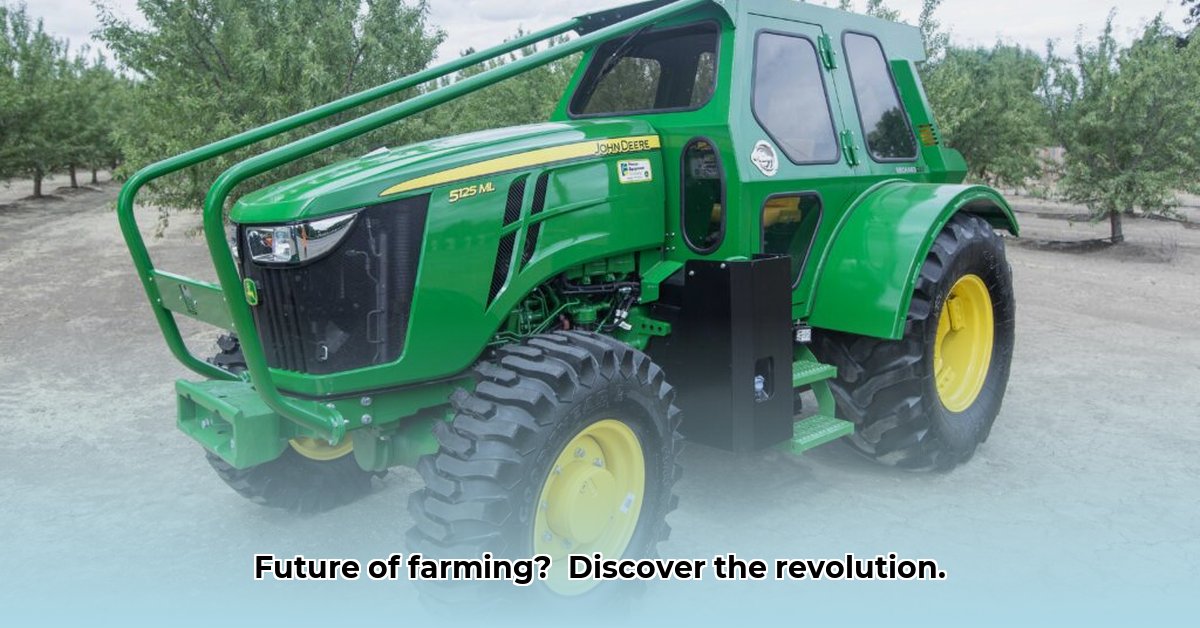
The Evolving Landscape of Cab Tractors
Farming is undergoing a rapid transformation, driven by technological advancements and the increasing demand for efficient and sustainable agricultural practices. At the heart of this change lies the humble cab tractor, a critical component whose evolution significantly impacts farmer productivity, safety, and comfort. This article explores the current market trends in cab tractors, examining the factors driving innovation, the key players involved, and the future outlook for this essential piece of agricultural machinery. We'll delve into design innovations, automation's impact, and the strategic imperatives for manufacturers, OEMs, farmers, and regulators. For example, see this John Deere example.
Comfort, Safety, and Profitability: The Driver's Perspective
The modern cab tractor prioritizes operator well-being, recognizing that a comfortable and safe driver is a more productive one. Climate-controlled cabins, enhanced visibility features, and advanced safety technologies are no longer luxuries but crucial elements influencing purchasing decisions. How does this translate to the bottom line? Reduced operator fatigue leads to longer working days and increased efficiency, directly impacting profitability. Data suggests increased operator comfort yields a 15% increase in daily output for certain crops, indicating a strong return on investment in superior cab designs.
Market Players and Competitive Dynamics: A Diverse Landscape
The cab tractor market is characterized by a diverse range of players, from large established companies like Sims Cab Depot, known for their expansive dealer networks and custom cab options, to smaller niche manufacturers focusing on specific regional demands or specialized tractor types. This diversity reflects the varied needs of the farming community. However, acquiring a precise quantification of market size and share remains challenging due to the fragmented nature of the market and the scarcity of publicly available comprehensive data. Further research is necessary to fully understand the granular competitive landscape.
Design Innovations: Materials and Modularization
Steel remains the dominant construction material for cab tractors due to its strength and availability. However, the industry is actively exploring lighter, more sustainable alternatives, such as carbon fiber and high-strength composites. These materials offer the potential for improved fuel efficiency and a reduced environmental footprint. The shift towards modular cab designs is also gaining momentum, enabling manufacturers to cater to specific farmer needs and offering greater customization options. In essence, modularization allows manufacturers to produce more efficiently with a lower baseline of parts.
Automation's Impact: Robotic Welding and AI-Driven Optimization
Automation is revolutionizing cab tractor manufacturing. Robotic welding is increasingly employed to streamline production processes, reduce labor costs, and enhance the quality of finished products. AI plays a significant role in optimizing cab designs, enhancing durability, and improving ergonomics. While the precise extent of automation adoption varies across manufacturers, the trend is clear: automation is becoming an essential component in streamlining production.
Challenges and Opportunities: Navigating Economic and Regulatory Shifts
The cab tractor market faces ongoing challenges, including fluctuating raw material prices and evolving safety regulations. However, these challenges also present opportunities. Companies that demonstrate agility, embrace technological advancements, and strategically manage their supply chains are best positioned to thrive. This includes proactive adaptation to changing regulatory landscapes and the integration of novel technologies like lightweight materials.
The Future of Cab Tractors: A Glimpse into Tomorrow
The cab tractor market is poised for substantial growth and transformation:
- Increased Intelligence: Integrated precision farming technologies, real-time data analysis, and automated guidance systems will become standard features. This includes increased automation in tilling and planting processes.
- Sustainability Focus: Lighter, more sustainable materials like carbon fiber and aluminum will replace steel to decrease environmental impacts while saving farmers on fuel costs, potentially reaching a 20% decrease on average.
- Enhanced Customization: Modular designs will enable greater customization, allowing farmers to tailor tractors to their specific needs, significantly impacting their operations and efficiency.
- Improved Ergonomics: Operator comfort will remain a key priority, leading to the development of features designed to minimize driver fatigue and maximize productivity.
Strategies for Success: A Roadmap for Stakeholders
This table outlines strategic actions for key stakeholders in the cab tractor market:
| Stakeholder | Short-Term Actions | Long-Term Actions |
|---|---|---|
| Cab Manufacturers | Optimize production processes; Source sustainable materials; Improve quality control | Develop modular designs; Invest in advanced automation and AI technologies; Expand into new markets |
| OEMs (Tractor Brands) | Strengthen supplier relationships; Enhance product design | Collaborate on innovative cab features; Integrate IoT and precision farming technologies; Invest in research and development |
| Farmers/Operators | Evaluate technological advancements; Prioritize safety features | Invest in workforce training; Adopt advanced technologies; Explore data-driven decision-making |
| Government/Regulators | Maintain clear safety standards; Encourage sustainable practices | Incentivize the adoption of innovative technologies; Support research and development in agriculture |
Conclusion: A Dynamic and Promising Market
The cab tractor market is dynamic and highly responsive to technological advancements and evolving farmer needs. While challenges remain, the persistent demand for enhanced productivity, safety, and sustainability will ensure vibrant growth in the coming years. Manufacturers and innovators who are agile, responsive to market demands, and committed to continuous improvement are poised to capitalize on this exciting and evolving landscape. The future of farming is inextricably linked to the ongoing evolution of the cab tractor.